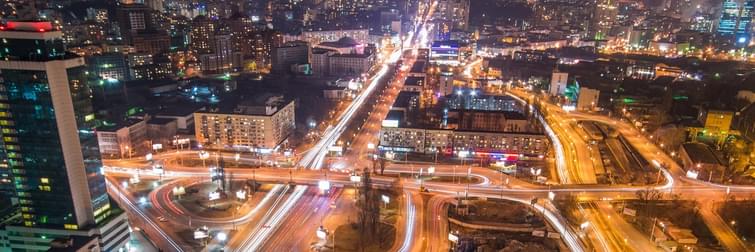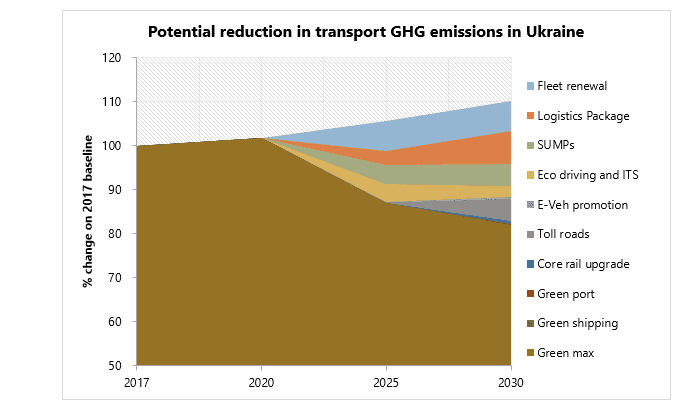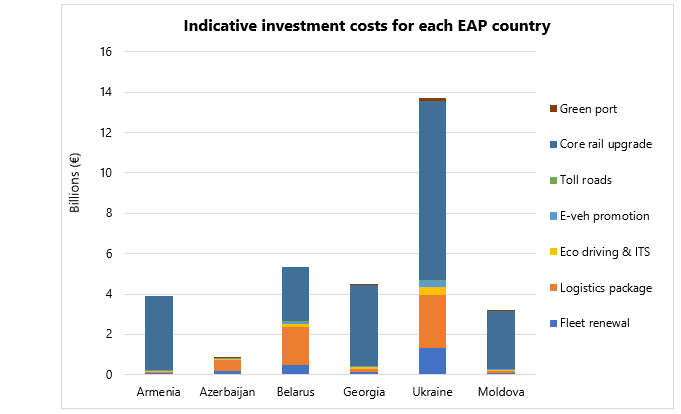
blog: Bridging the gap between delivering and funding green transport projects
Thursday 16th January 2020
The Challenge
Today, many low- and middle-income countries around the world have large ambitions to reduce their greenhouse gas (GHG) emissions, but struggle to identify relevant projects and secure the financing to do so. At the same time, many financial funds (green, insurance, and pensions) are ready to invest in green solutions but struggle to find the right projects or countries to work with. The big green funds include the Global Environment Facility and the Green Climate Fund
ITP is working with the World Bank to help bridge this divide. We want to link the aspiration to achieve low and zero carbon transport to the financing. We are now working in the EU’s Eastern Partnership countries of Armenia, Azerbaijan, Belarus, Georgia, Moldova, and Ukraine following a three-pronged approach:
- Identify economically attractive projects and policies that deliver substantial reductions in transport GHG emissions
- Create a transport and emissions model to assess the impact of green projects, and develop a visualisation tool to engage decision makers and finance institutions
- Identify traditional and innovative financing solutions for green transport solutions and guide governments to develop and prioritise these projects so they can secure financing
Modelling potential schemes
We are not just interested in the performance of one country on its own, we are also interested in the opportunity for these six neighbouring countries to work better together and with the EU to reduce the carbon intensity of long-distance passenger travel and trade.
Therefore, we are using a continent scale Cube transport model to develop green transport projects, as well as our in-house National Transport & Fleet Emissions Model. The emissions model enables us to test the response from both passenger and freight activity by all modes - road, rail, water, and air. One of the key innovations we have brought to national emissions modelling is the ability to carefully model the evolution of a vehicle fleet through time, enabling policies like scrappage schemes and import taxes to be accurately captured.
Provisional modelling has determined the potential performance of green transport policies in each country based on the application of best practice examples from around the world. For example, in Ukraine we anticipate the full range of green transport policies could reduce GHG emissions by 18% on today by 2030. This would turn around the projected business-as-usual increase of 10% by 2030.

Toll roads could significantly decrease GHG emissions in the Caucasus countries. However, the displacement of vehicles onto surrounding roads would increase local air pollutants in some locations. Electrifying and double tracking rail lines not only reduces GHG emissions but also improves travel time. Here we see the new travel time from Kyiv when the core rail network is upgraded.
Show me the money!
The full application of these policies has also been costed, and they are expensive! This shows the scale of the task. If the Ukraine wanted to go all out on green transport, they’d need at least €14bn plus a doubling of their annual spend on urban transport. This presents the scale of the financing task, but it also shows how important project prioritisation will be.

Making this real
We are now working with the national governments to identify what their priorities are for transport improvements across their country and their preferences for different green transport pathways. We are now using this information to develop a refined set of projects and policies that are specifically suited to each country. Economic and financial appraisal will help to prioritise projects and specify the suitable opportunities for financing.
Who cares about the word 'finance' anyway?
Financing might sound boring, but we are really excited to be working in this area. Up until now, transport projects have largely failed to qualify for green financing because it is harder to make transformative reductions in transport GHG emissions compared to a sector like energy. Also, it is often harder to measure and verify the emission reductions achieved in the transport sector.
However, the Paris Climate Agreement of 2015 requires the world to be carbon neutral across all sectors by 2050 at the latest to limit warming to 2C or better. Transport therefore has 30 years to decarbonise and we know how long it can take to build a railway line or a BRT system. So, even though it is harder to achieve emission reductions in transport, we need green finance money to move into transport as soon as possible to enable the 2050 target to be met.
Click here to find out more about other data analytics work that ITP is involved with.
